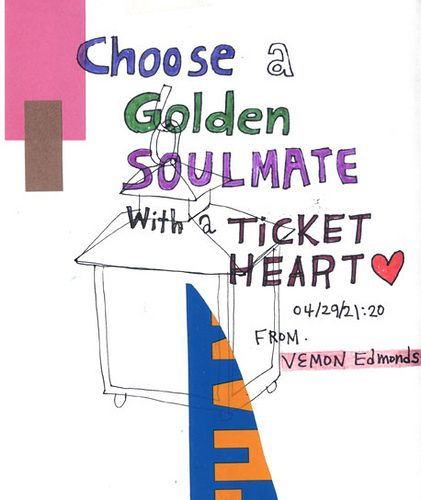Book Serendipity: Literary Soulmates and More

Love this artist’s stuff on flickr. Here, turning spam messages into art.
One of my favorite things about being a bookish person is crossing paths with other bookish people. And what I like best about those experiences is when I meet someone who reads like I do, which means we share both a number of past experiences with books as well as the potential for a reading future together. Such a person’s book recommendations are worth their weight in gold. So are the potential conversations we might have.
The first time this happened to me was with a professor/mentor type at UT Austin when I was an undergrad. I never had a class with Brian Doherty–my loss–but he always ran the UT writing contests, and so I got to know him through that. (Any time my writing had the potential to earn me cash, you better believe I was in!) We loved a lot of the same books, and so when he recommended Junot Díaz’s collection of stories, Drown, I was in 100%. Same with Mistry Rohinton’s A Fine Balance and a ton of other delicious reads. But what I liked best was the surprise and delight of the books we both had under our belt.
Of course, book serendipity shows up in all kinds of other ways, too. Like last week I discovered that my editor, Andrew Karre, was behind one of the first YA novels that got me interested in writing YA myself, How It’s Done, by Christine Kole MacLean. This entry from his blog exposed the connection. Here’s the relevant bit:
The very first YA novel I acquired, edited, and published entirely was a realistic YA (How It’s Done by Christine Kole MacLean). Novels like Christine’s were a prime entry point for me–they’re the Neapolitan of my YA reading life–but I pretty quickly branched out, and now I value all of the ways the various YA sub genres riff on the basic YA ingredients and techniques: teenage experience and character-driven storytelling.
The funny thing is, the part about How It’s Done is just a small example in the post, which is really about genres and sub-genres in YA, but it was the point of spark and excitement for me in reading it. In my head, Andrew’s post is filled under “Holy cow, Andrew and I have another book in common” and “How cool is it that Andrew edited this book?!”
By the way, even though How It’s Done isn’t my favorite book of all time, what caught my attention was how it was built in part out of a world I recognized (the evangelical community). Somehow that recognizable aspect made the idea of writing a N.O.V.E.L. seem less daunting. Like maybe it could be thought in lowercase letters.




